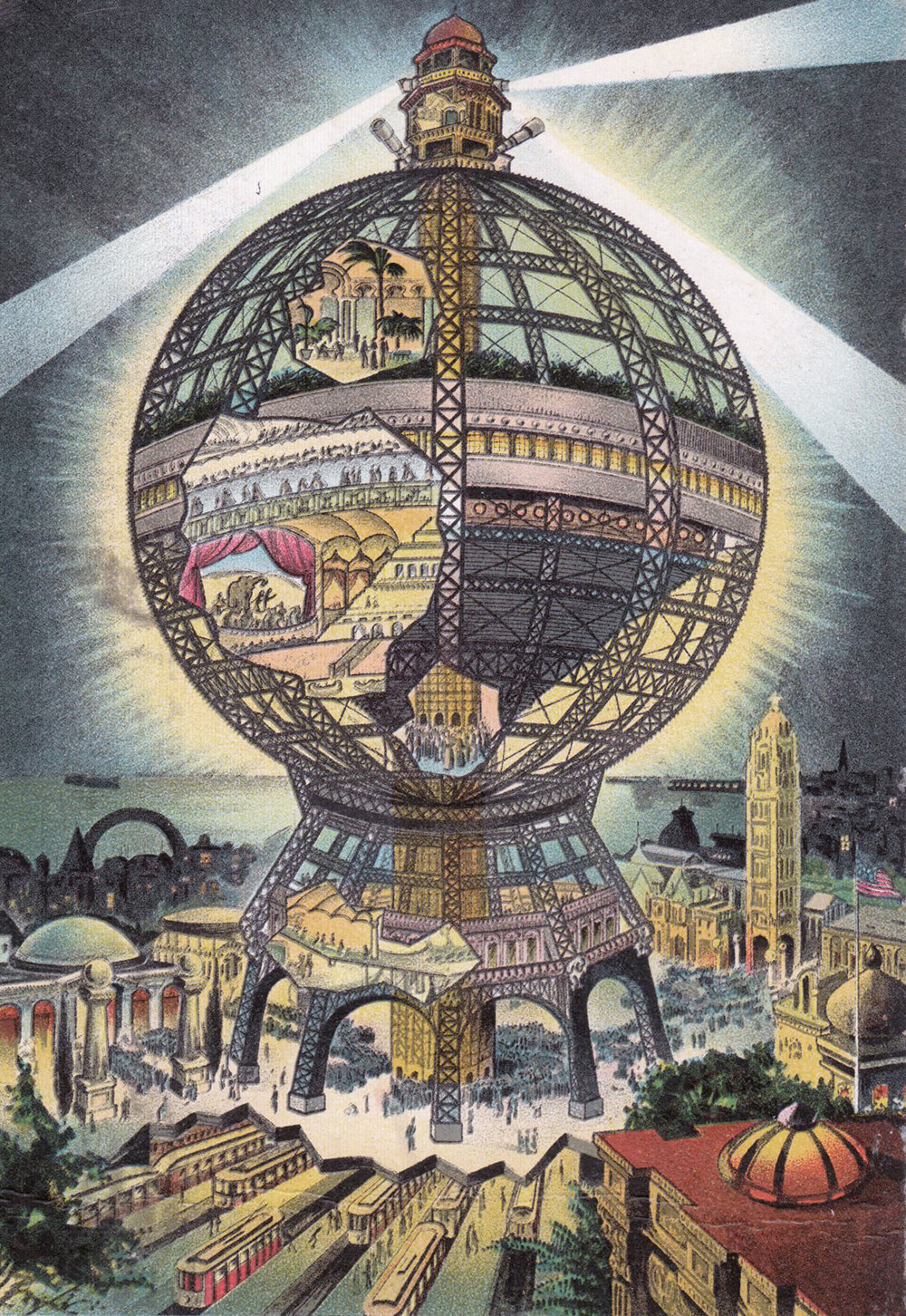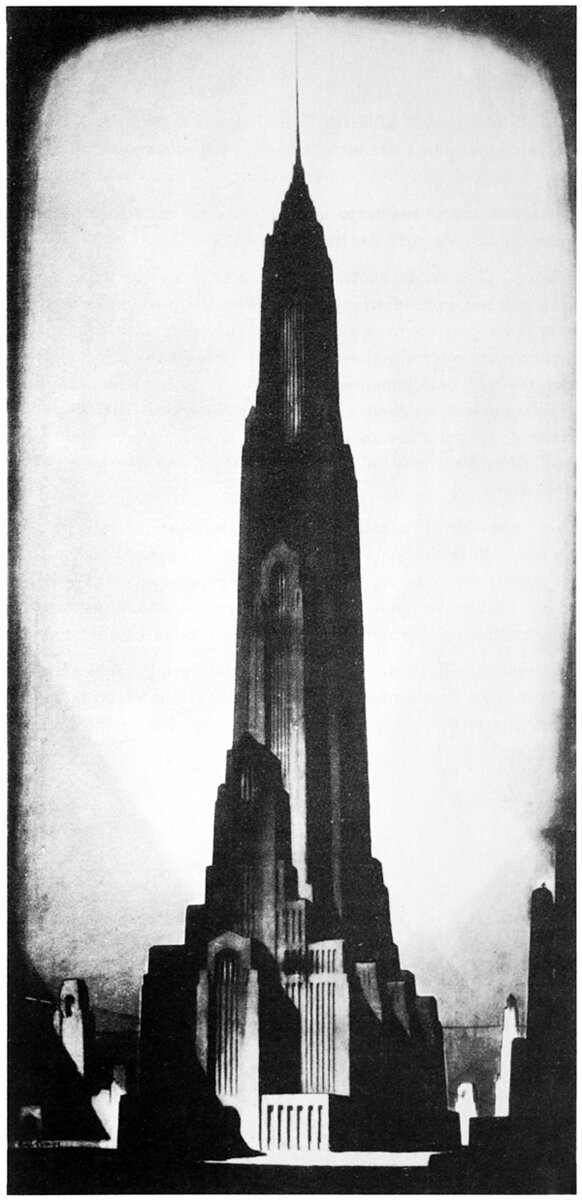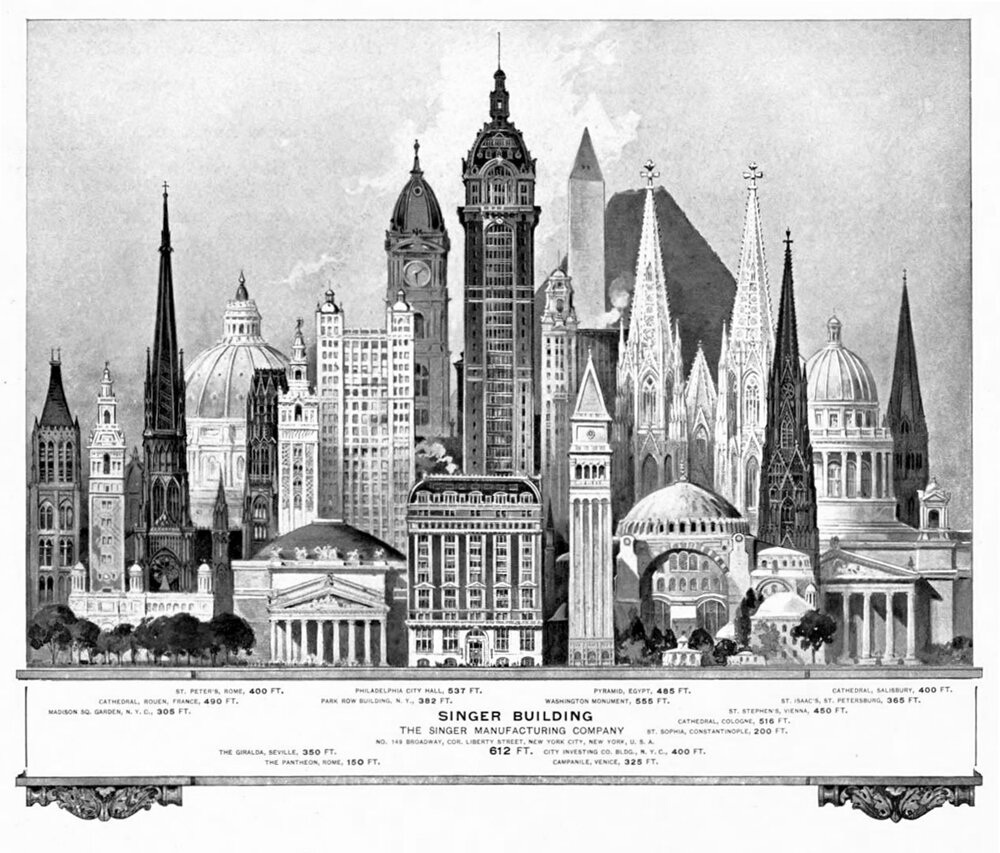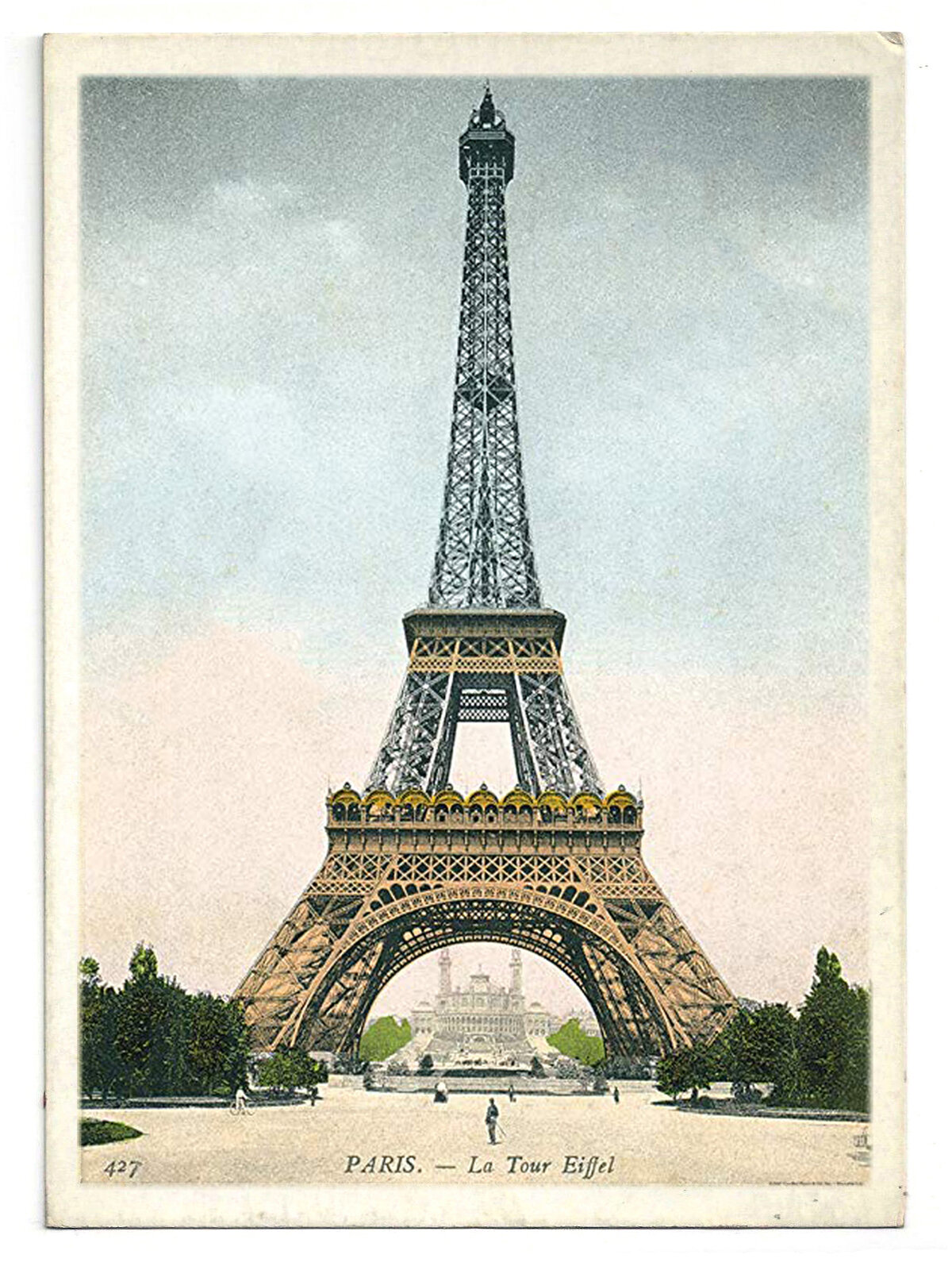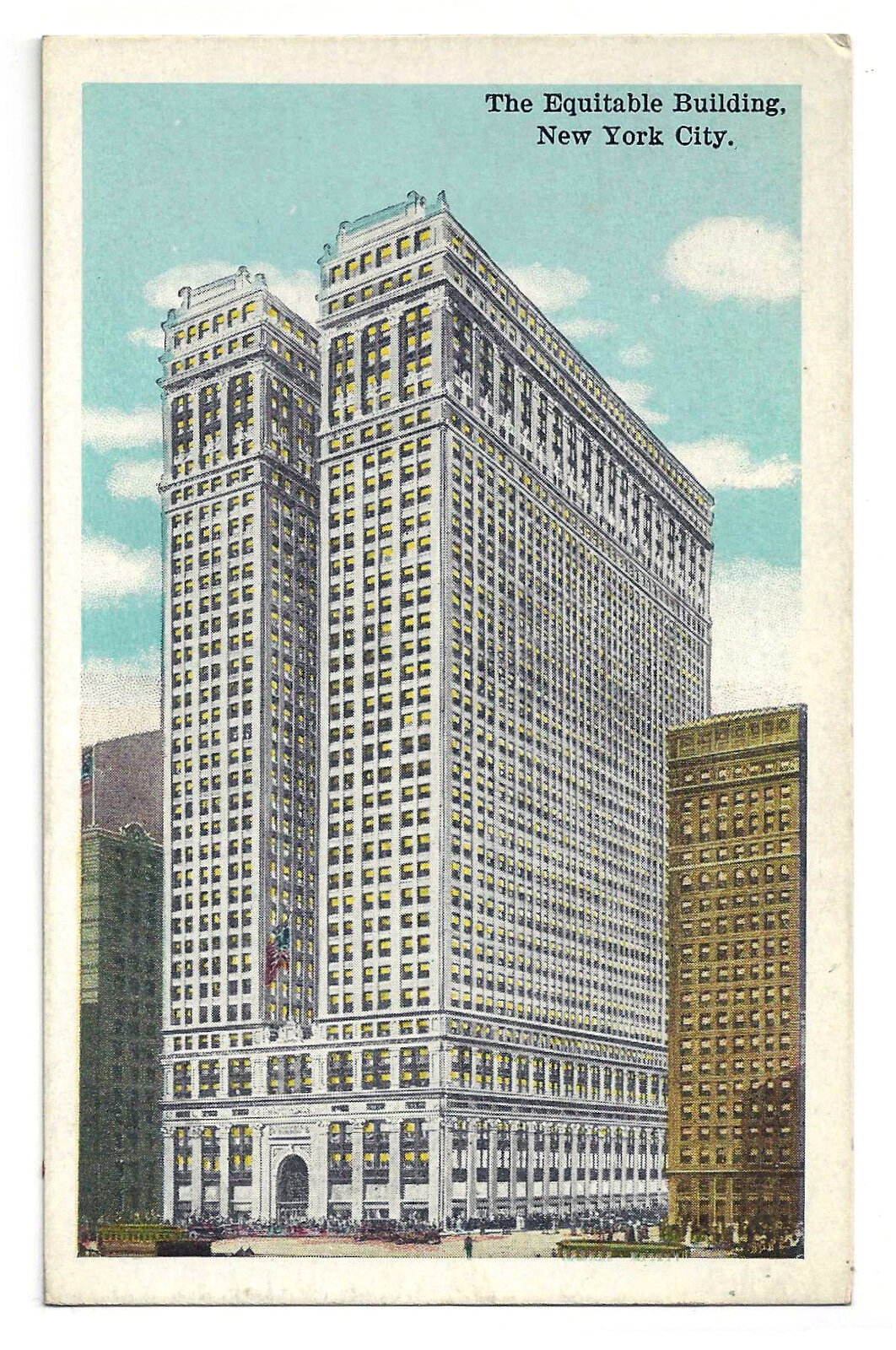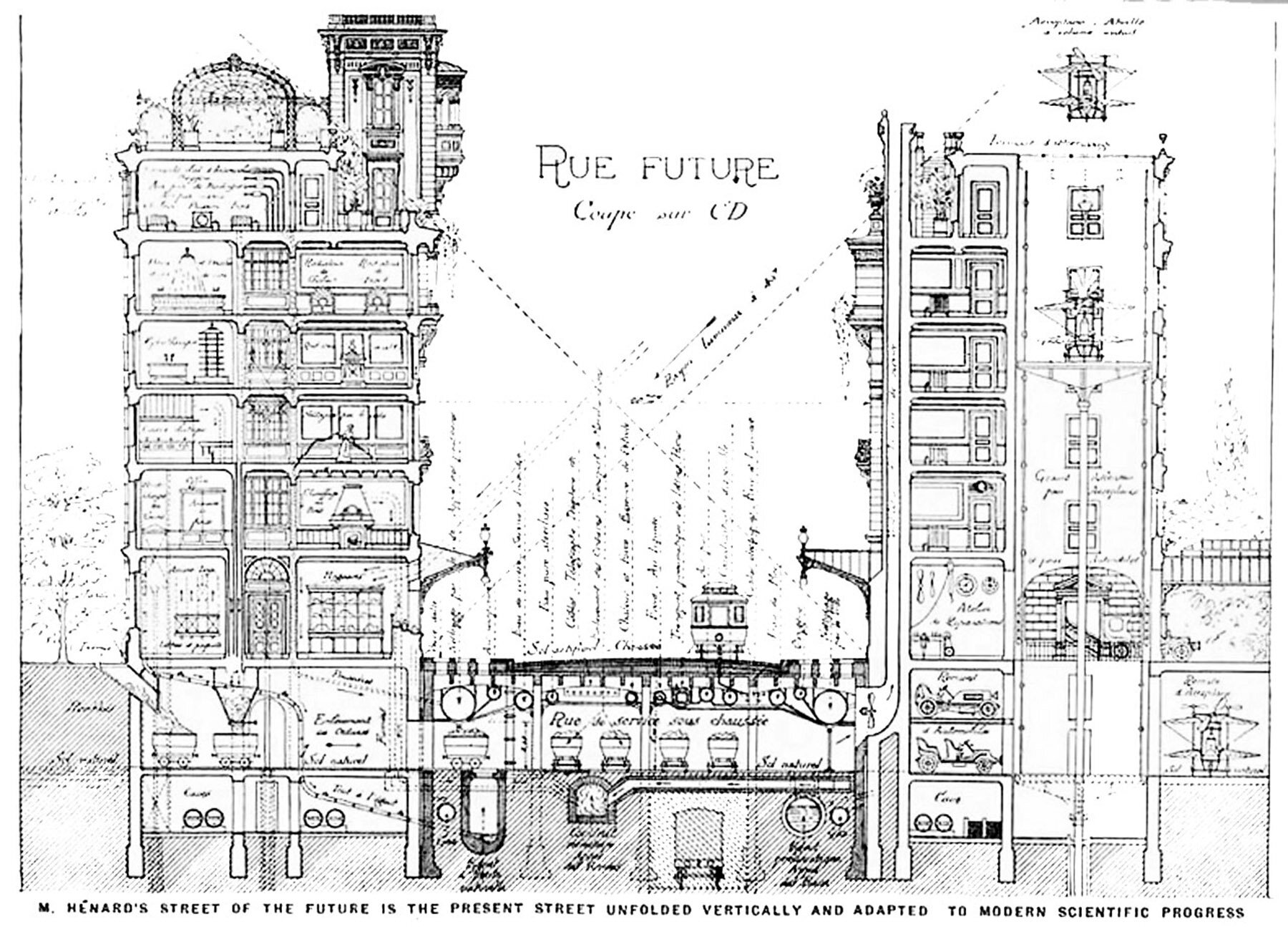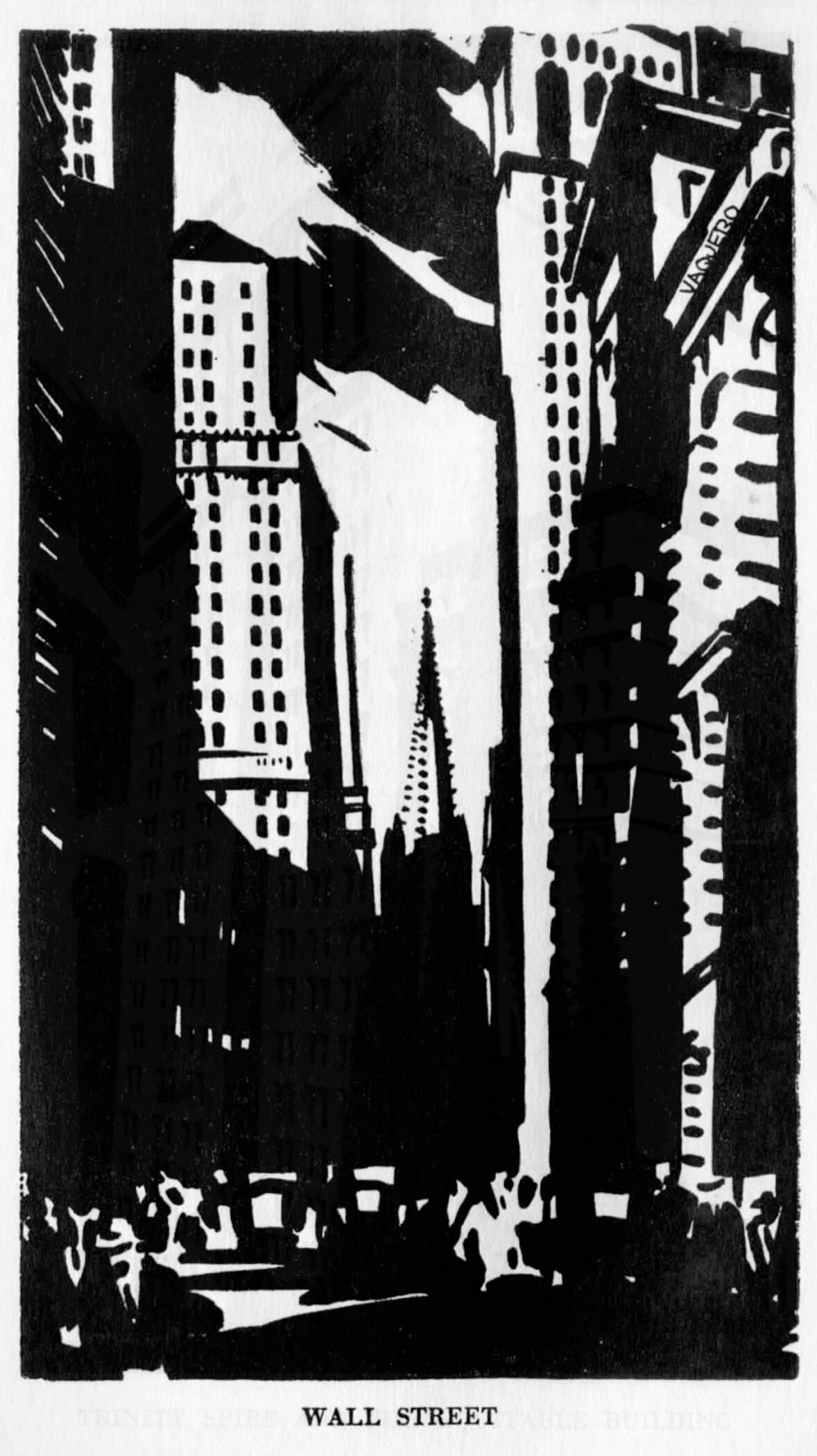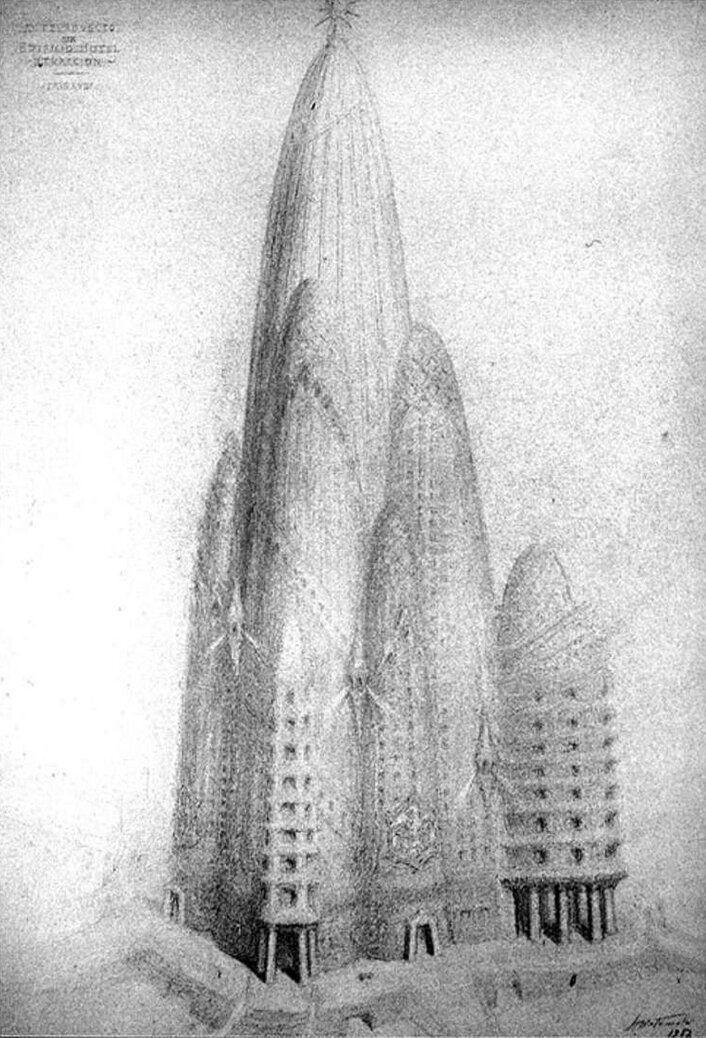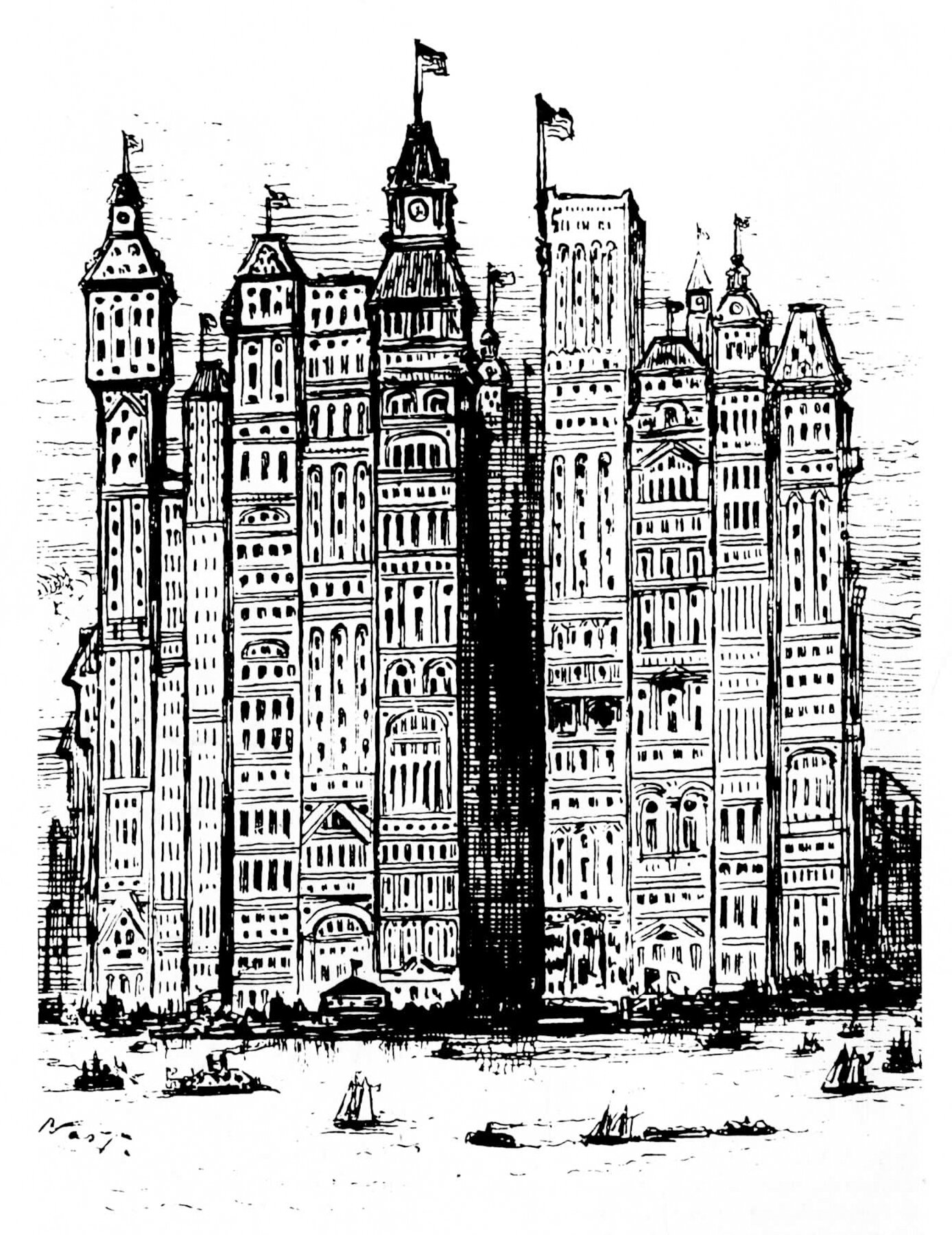Welcome to On Verticality. This blog explores the innate human need to escape the surface of the earth, and our struggles to do so throughout history. If you’re new here, a good place to start is the Theory of Verticality section or the Introduction to Verticality. If you want to receive updates on what’s new with the blog, you can use the Subscribe page to sign up. Thanks for visiting!
Click to filter posts by the three main subjects for the blog : Architecture, Flight and Mountains.
The Coney Island Globe Tower
Pictured above is the Coney Island Globe Tower, proposed in 1906 by Samuel Friede for a lot at the corner of Steeplechase Park in Coney Island, Brooklyn. The building features an enormous globe built of latticed steel, similar in style to the Eiffel Tower. The Globe was designed as an entertainment and leisure complex, and it was marketed as the second tallest building in the world, behind the aforementioned Eiffel Tower. The most intriguing part of the proposal, however, is that it was a fraud.
“You don’t build [the world’s tallest] skyscraper to house people, or to give tourists a view, or even, necessarily, to make a profit. You do it to make sure the world knows who you are.”
-Paul Goldberger, American architecture critic, born 1950.
Hugh Ferriss and Religion on the Skyline
Hugh Ferriss was an architect and illustrator, best known for his charcoal renderings of skyscrapers in the first half of the 20th century. Pictured here is an illustration from his 1929 work The Metropolis of Tomorrow, titled Religion. This image and the underlying thought behind it’s creation ties into a larger trend around this time that saw religious structures attempt to re-take the skyline from commerce.
Height Lineups and the Abstraction of Verticality
Height lineups like this serve to illustrate how important Verticality is to the perception of our tall buildings, and studying this example got me intrigued about the nature of drawings like this. After some digging, I found many more examples of height lineups throughout the past two centuries, and there are curious commonalities throughout all of them. For starters, they are just beautiful drawings to study. On a deeper level, they provide us with a window into the perceived importance of buildings during a given time in history.
Verticality, Part X: Conquering The Skies
The construction of the Equitable Building in 1915 ushered in a new age of skyscraper design. Humans were now able to escape the surface of the Earth with our interior environments, and our need for Verticality had ceased to be driven by the unknown. It was now driven by our need to congregate through density and to distinguish ourselves from one-another. Ego had replaced God, and as a result our quest for Verticality would become synonymous with human achievement.
Verticality, Part IX: Man Upends God
The needs of man become more important than the needs of God
After the Renaissance, humanity would largely abandon our ambitions to recreate heaven on earth, and our focus would shift to raising up our bodies as far from the surface as possible. Rather than singular, largely empty spaces, our tallest and most ambitious constructions would become containers of stacked spaces, still with Verticality as the ultimate goal. We were beginning to escape the surface.
Cities of the Future from the Past
It's always interesting to see how previous generations viewed the future of their cities. In particular, the early 20th century was a hotbed for this type of thinking due to the emergence of the skyscraper as a building type.
Superheroes and Skyscrapers
It’s a common shot in superhero movies for the titular character to be shown on top of a building, looking out over the landscape and the city below. I first took notice of this trope on a recent flight while watching Venom (2018), and I began pondering just how common this shot is.
Trinity Church and The Contemporary Dwarfing of Historic Structures
Height in the built environment is relative. A tall building at the center of a major city today is quite a different idea than a tall building was a hundred years ago. As a city grows, taller buildings will get built throughout time, and the meaning of tall gets taller with them. Buildings once considered tall get overshadowed by more contemporary structures.
Antoni Gaudí's New York Skyscraper
The Spanish architect Antoni Gaudí is known the world over for his iconic architecture, rich in organic, curvilinear forms. One lesser-known project of his is the Hotel Attraction. It was designed in 1908 for an unspecified site in Lower Manhattan, New York City. The project would have housed a hotel, restaurants, theatre hall, exhibition hall, galleries, and a panoramic lookout at the top, called the 'Space Tower'. If built, it would have been 360 meters, or 1,181 feet tall.
Skylines As Value Indicators
Take a look at this 1881 Cartoon by Thomas Nast for Harper’s Weekly titled New York A Few Years from Now. Nast shows the southern tip of Manhattan Island, jam-packed with a phalanx of skyscrapers. The buildings are pushed so close together it’s hard to imagine where the streets are. Back in the shadows, you can just make out the spire of Trinity Church, which at the time was the tallest building in the country. Nast is being hyperbolic, of course, but the reality of most modern cities isn't far off.

